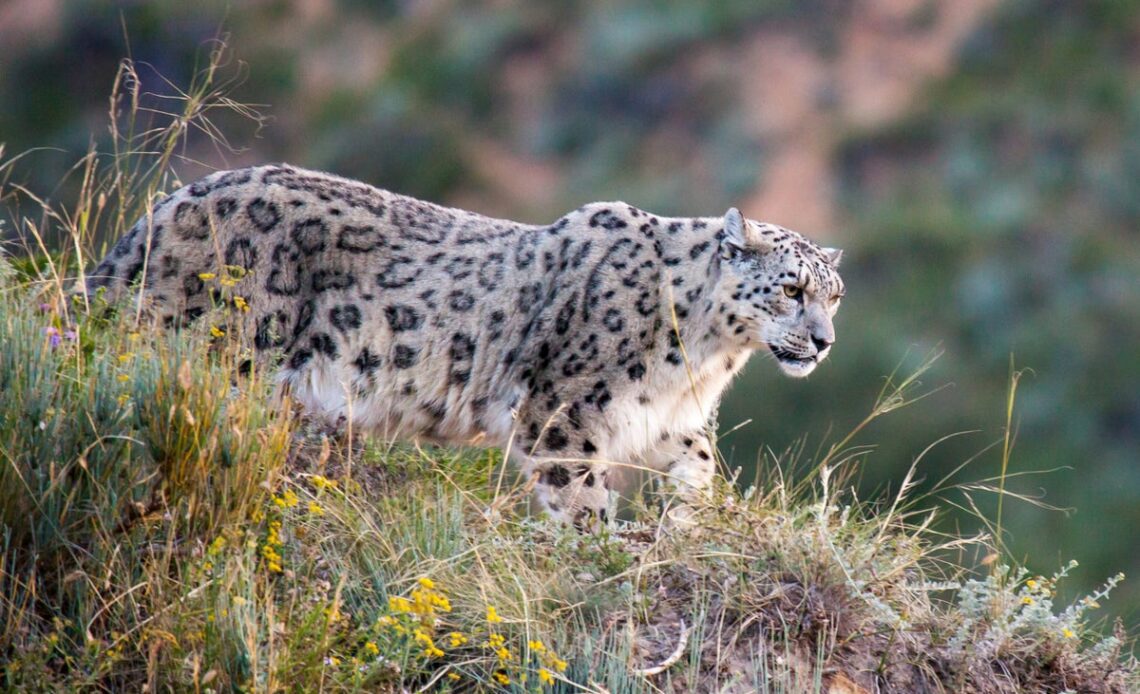“At the top of the mountain we are all snow leopards,” Hunter S. Thompson once wrote. Four thousand metres up the Tien Shan mountains, perched atop a metre-wide ridge, I’m not so sure. But any fear I feel is outweighed by curiosity, and the same prickling sensation I’ve experienced for days: the sense that out there, hidden in a cave, one of the world’s most elusive beasts might be watching me.
As befits the snow leopard’s nickname, the “grey ghost” – the scientific term, Uncia uncia, is equally alliteration-happy – setting eyes on one is a Sisyphean task. While it’s no longer listed as an endangered species, as few as 4,000 may remain in the wild. Since hosting the 2013 Global Snow Leopard Forum, reuniting the 12 Central Asian countries the animal inhabits, Kyrgyzstan – a landlocked neighbour of China, Kazakhstan, Tajikistan and Uzbekistan – has been a pioneer in their conservation.
I’ve come to the country with non-profit Biospheres Expeditions, voted “Best Volunteering Organisation” at the international Responsible Tourism Awards. The group’s citizen science trips (pointedly not holidays in the R&R sense, hence the “reality check” in their pre-expedition briefing) focus on charismatic flagship species, from whales in the Azores to elephants in Malawi. It has been surveying snow leopards in Tien Shan for almost a decade alongside Germany’s biggest conservation NGO, NABU. (My expedition team is predominantly German, with an Australian thrown into the mix.)
Kyrgyzstan’s mountainscapes make a spectacular backdrop to big cat hunting
(Simon Pinson)
Base camp (2,900m) lies in the secluded Karakol valley – part of the Ala-Too range. It’s just south of the capital Bishkek, but a snaking seven-hour ride for our convoy of 4x4s. Here, Kyrgyz expedition scientist Taalai Mambetov enumerates the threats to snow leopards: climate change, poaching for pelts, bones and other body parts, and retribution killings by herders (the leopards occasionally descending from 3,000-4,500m altitudes to prey on livestock). The main issue is the increase of that livestock, whose overgrazing reduces the food available to the wild sheep and goats the leopards eat.
Read more on sustainable travel:
In the 1980s, what is now Kyrgyzstan and neighbour Tajikistan counted 1,200 to 1,400 snow leopards, but poaching was rife…
Click Here to Read the Full Original Article at The Independent Travel…
